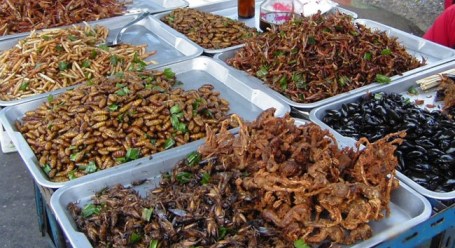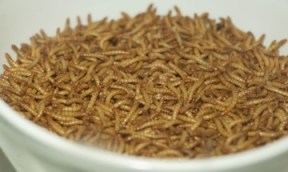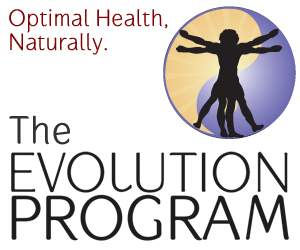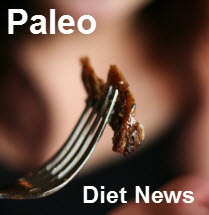Another Paleo Diet Food Source? Insects! Ewww!
For many of us following the Paleo diet, this means eating the usual stuff: meat (beef, lamb, chicken), fish & seafood, vegetable with limited starches and some nuts and fruit. That’s it. Well, dairy, if you are following the Primal path. But is there another Paleo diet food source that we over look, something that does not appear on the short list? There is and to most westerners it’s not something we can even think about eating. I am talking about insects.
I can’t say that bugs are something that I would relish eating, indeed, I’ve NEVER knowingly eaten any, but insects do qualify as a Paleo diet food. Our ancestors would most certainly have been eating bugs. They are abundant and high in protein. There are many cultures around the world which include them in their cuisine. In point of fact, the West may be in the minority here, since more people around the world do eat insects than don’t. According the National Geographic:

Deep fried insects at a market stall in Bangkok, Thailand. Photo by Takoradee, image courtesy of Wikipedia.org
Many types of insects appear on menus today. Bugs remain a traditional food in many cultures across Africa, Asia, and Latin America, DeFoliart said.
In Ghana during the spring rains, winged termites are collected and fried, roasted, or made into bread. In South Africa the insects are eaten with cornmeal porridge. In China beekeepers are considered virile, because they regularly eat larvae from their beehives.
Gourmands in Japan savor aquatic fly larvae sautéed in sugar and soy sauce. De-winged dragonflies boiled in coconut milk with ginger and garlic are a delicacy in Bali.
Grubs are savored in New Guinea and aboriginal Australia. In Latin America cicadas, fire-roasted tarantulas, and ants are prevalent in traditional dishes. One of the most famous culinary insects, the agave worm, is eaten on tortillas and placed in bottles of mezcal liquor in Mexico.
It appears that the Neolithic revolution in Europe was the source of our dislike of the creepy-crawlies. Insects competed with us for our food crops and were seen as pests, not something to be eaten, but to be killed. Hence the development of some pretty nasty insecticides.
Eating the Paleo diet food source of insects can also be
sustainable and less costly. Environmentally friendly you could say:
……..there are many nutritional benefits to eating insects.
Hamburger, for example, is roughly 18 percent protein and 18 percent fat. Cooked grasshopper, meanwhile, contains up to 60 percent protein with just 6 percent fat. Moreover, like fish, insect fatty acids are unsaturated and thus healthier.
DeFoliart, the Wisconsin entomologist, says that not only are insects nutritious and delicious, they could be an environmentally friendly source of human protein requirements.
“In our preoccupation with cattle, we have denuded the planet of vegetation,” DeFoliart said. “Insects are much more efficient in converting biomass to protein.”
Insect farming is arguably much more efficient than cattle production. One hundred pounds (45 kilograms) of feed produces 10 pounds (4.5 kilograms) of beef, while the same amount of feed yields 45 pounds (20 kilograms) of cricket.
While the idea of eating bugs is gross and our immediate response is ewww! consider that we do eat shrimp, lobster and crabs (which, like insects, are arthropods).
Can we say we are following the Paleo diet and leave out this food source? Insects may be off the table now, in Europe and the U.S., but given environmental pressures and the continuing need for less expensive sources of protein, this may be a path we will have to adopt.
Would you eat insects? Vote below in our poll.






